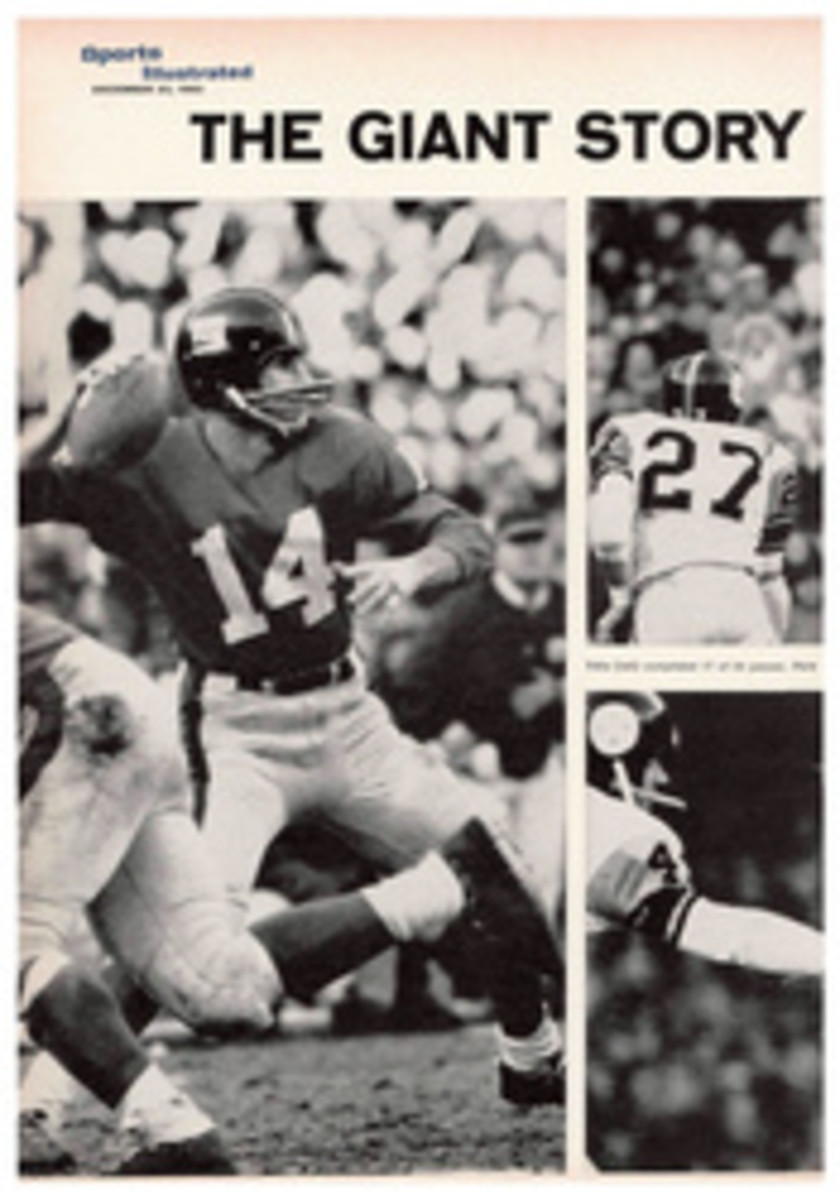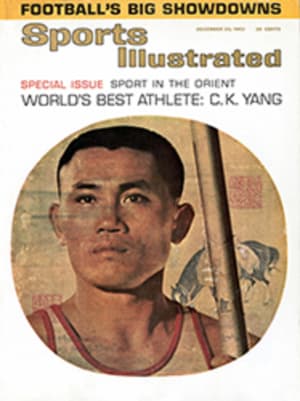
Dust off a place for the Davis Cup
Almost every year at Christmas, the Australians remove the Davis Cup from its hiding place, polish it brightly and place it on a courtside table. It is there for foreign players to stare at, pose beside and perhaps touch, but not to take away. Only twice in the last 13 years has anyone taken the Davis Cup away from Australia. This year should provide the third occasion.
The Challenge Round will begin on the day after Christmas in Adelaide and, surprisingly, nearly everyone in Australia thinks the U.S. will win. Harry Hopman, the wily old Australian team coach, thinks so. So does Adrian Quist, former cup player. "It could be one of the closest contests we've seen in years," says Quist, "but if I had to pick a winner it would be the U.S."
There are five players on the invading U.S. team but, barring injury, only two of them will swing a racket in competition. One is Dennis Ralston, the tall, lanky redhead with a redhead's temper. In Australia this past month Ralston has played the best tennis of his career. He reached the finals of three successive tournaments, losing only once, and that on the day he learned of President Kennedy's death.
The other American player is Chuck McKinley, the best amateur player in the world when he is healthy. The problem is that no one is sure whether he is healthy or not. McKinley suffered a muscle spasm in his back during the U.S. nationals in August. Playing in Sydney a month ago, he strained his back again. Although he has been rallying without pain in practice, he has not dared test his back in singles competition, and McKinley, more than most players, needs competition to be at his best. When he takes the court in Adelaide next week he will not have played a tournament singles match in more than a month.
The members of the U.S. team, it is pleasant to report, have acted like model citizens in Australia. It has not been easy. On reaching Sydney, the Americans had to swallow this with their morning orange juice: "One bright spot about Australia losing the Davis Cup," said the Sydney Daily Mirror, "would be that it would preserve us from further visits from a group of the most ill-mannered, arrogant boors ever assembled. They mix about as well as oil and water." Ralston, McKinley and the rest of the team bit their lips, thought their thoughts, but said nothing. Their conduct during the tournament at Sydney was so exemplary, in fact, that, as they left, the Sydney Morning Herald said: "They are exceptionally fine fellows.... They make very pleasant companions."
Few Australians outside of sportswriters have had a chance to visit with the Americans, because Captain Bob Kelleher has had the team on a strict regimen. No drinking, no smoking, no parties is the rule. Following afternoon practice Kelleher has the players doing calisthenics with weights attached to their wrists and ankles to strengthen them. Under such a program Kelleher has no trouble enforcing his final rule: early to bed.
Once again Pancho Gonzalez, that old pro, is working with the U.S. team. Not only does Gonzalez supply the players with high-level competition, but he has a quick eye for picking out slight errors. Rallying with McKinley at Adelaide, he yelled across the net: "You're hitting the ball square on. Turn and hit it." He has a sharp needle, too. "You're worse than teaching a beginner," he growled at McKinley when McKinley began to ease off. When Gonzalez growls, kidding or not, the team pays attention.
It is not so much the strength of the American team that makes the Australians pessimistic as it is the apparent weakness of the Australian team. Whereas the U.S. team is set—Ralston and McKinley in singles and doubles—no one is sure just who will be playing for Australia. Roy Emerson is on the team, that rangy farm boy with the deadpan expression who just a little over a year ago was better than any other amateur except Rod Laver. But whether it is business—Emerson is a public relations man for a tobacco company—or carelessness, Emerson has not been a good tennis player for many months. He was beaten at Forest Hills by Frank Froehling, a member of the U.S. team, and he has been beaten by Ralston twice during the past month. Nevertheless, Emerson will probably play singles and doubles for Australia.
An indication of Australia's distress is the return of Neale Fraser, now 30, from two years of retirement. Fraser, a big, good-looking left-hander with a powerful serve, forehand and net game, and a backhand Aunt Mabel could return, is a fighter, a player with a basically unsound game who for several years managed to beat anybody around. He won the U.S. nationals two straight years, 1959 and 1960, but he was younger then and in marvelous condition. This past month, attempting to regain his form, he has been hampered by a tennis elbow and by the heat of the Australian summer. Playing in a recent tournament, Fraser wilted badly in the third set and lost. At Adelaide, where the temperature can soar to 110° and where the Davis Cup matches will be best of five sets, Fraser will be at a severe physical disadvantage. Whether he will be used probably will not be determined until a few days before the matches begin.
If Harry Hopman decides Fraser is not ready, he will probably use Fred Stolle, a second-line player who beat Roy Emerson at Perth. The Australian doubles team will be Emerson with Fraser, Stolle or John Newcombe, the fourth member of the team.
Not in many years has the Australian Davis Cup picture been so confused. During the dozen years it has dominated Davis Cup play, Australia has always had at least a brace of outstanding players. It began with Sedgman and McGregor and moved on with Hoad and Rosewall, Cooper and Anderson and, finally, Fraser, Laver and Emerson. Now it is the U.S., with Ralston and McKinley, that has the strong pair. When the Davis Cup is placed on the courtside table this year, Australians had better take a good look at it. It may be some time before they see it again.
PHOTO
U.S. CHANCES DEPEND HEAVILY ON THE CONDITION OF CHUCK MCKINLEY'S BACK

